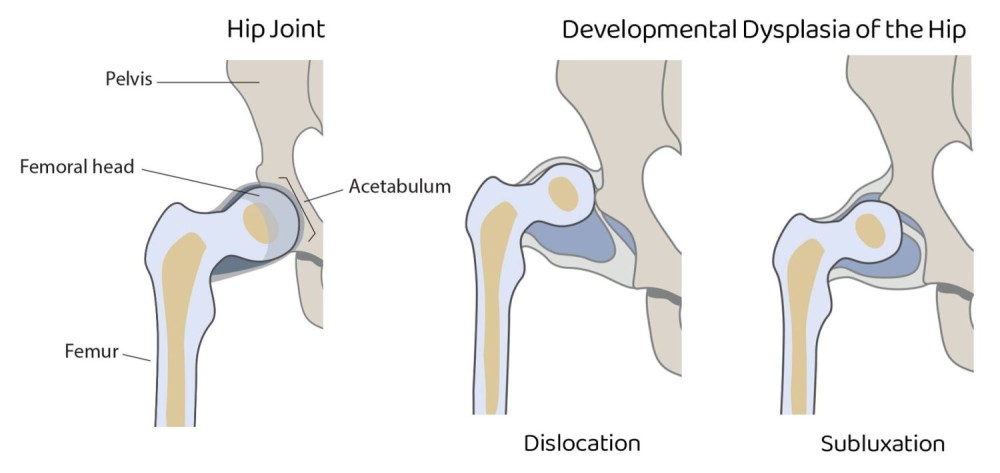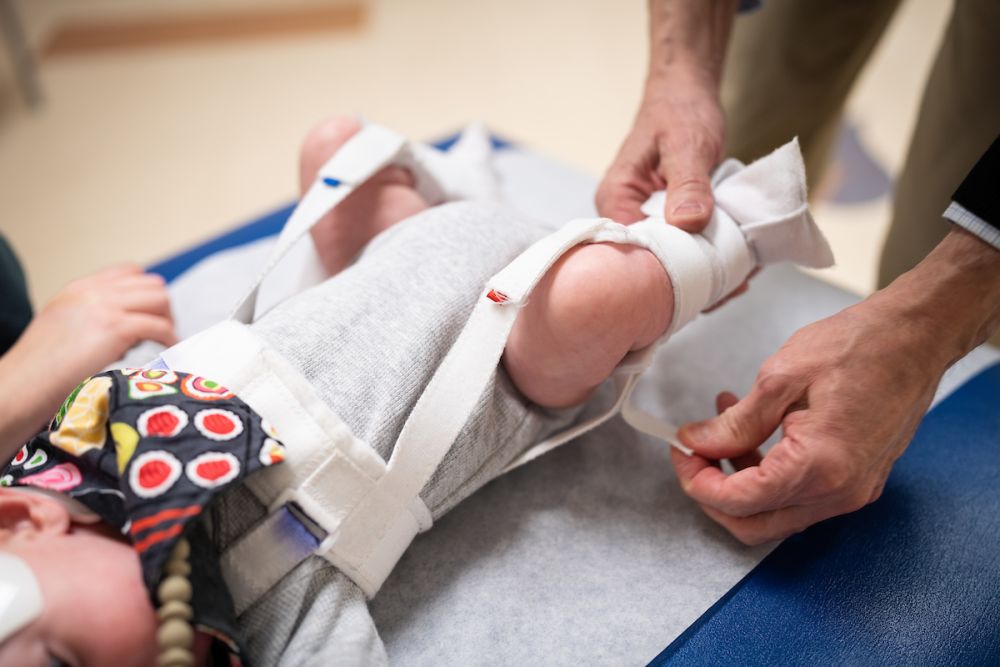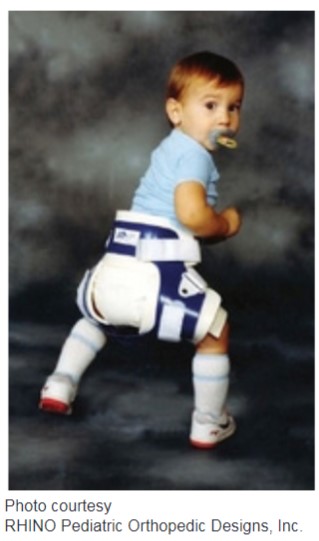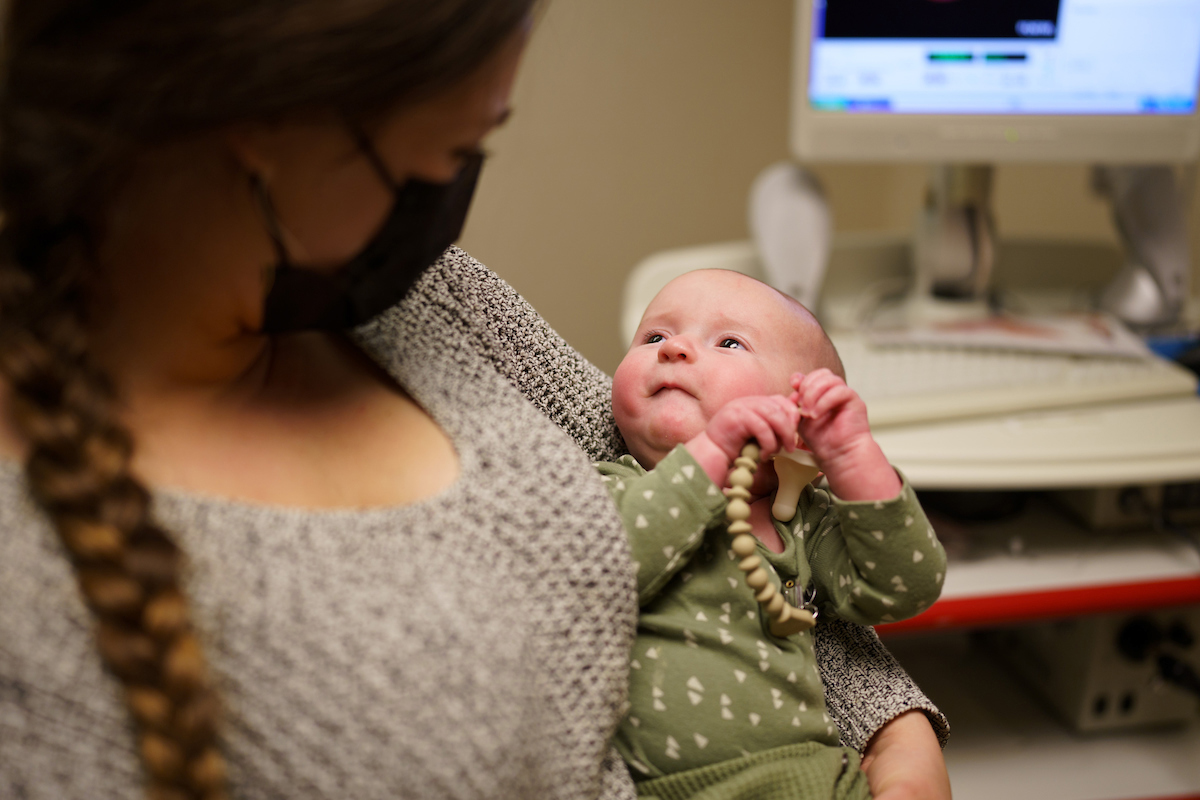What Is Developmental Dysplasia of the Hip (DDH)?
Developmental dysplasia of the hip (DDH) is a condition that occurs when the hip joint abnormally forms or grows. The hip is a ball and socket joint. If the ball (called the femoral head) is not in the correct position within the socket (called the acetabulum), then the hip joint cannot develop as it should.

Types of Hip Dysplasia
- Acetabular dysplasia: The ball remains in the socket, but the socket is too shallow to keep the ball in place.
- Dislocatable: The hip rests in either a normal or subluxated position (partially out of the socket) and the ball can be pushed completely out of the socket.
- Dislocated: The ball is completely out of the socket when the child is at rest.
- Subluxable: In the resting position, the ball is located normally in the socket, but in certain positions when pushing on the hip, the ball can be pushed partially out of the socket.
- Subluxed: In resting position, the ball is not located normally in the socket. Instead, it rests partway out of the socket.
What Causes Hip Dysplasia in Babies?
Developmental Hip Dysplasia (DDH) occurs in approximately one in 1,000 births. The exact cause of DDH is unknown but there are known risk factors. Developmental dysplasia of the hip seems to run in families. In addition, being in the breech position in utero sometimes puts stress on the baby’s hip and thigh muscles, causing a hip to move out of its joint.
Risk Factors for Hip Dysplasia
- A family history of Developmental Hip Dysplasia.
- Being the firstborn child.
- Being female.
- Being in a breech position during pregnancy.
- Being part of a multiple gestation pregnancy (twins, triplets).
Developmental Hip Dysplasia
The earlier Developmental Hip Dysplasia is discovered and treated, the greater your child’s chances for a successful correction. Developmental Hip Dysplasia might prevent or delay milestones, such as sitting and crawling. If left untreated, Developmental Hip Dysplasia can lead to walking abnormalities, a limb-length difference, early arthritis, or hip pain.
How is Developmental Hip Dysplasia Diagnosed and Treated?
Hip dysplasia in infants can be difficult to detect—especially in newborns. During your baby’s routine medical checkups, healthcare providers usually look for signs of DDH. If risk factors are present or there are concerns for DDH, your child’s hips will be examined by ultrasound or X-ray. It's important to have hips examined by a skilled medical team, including a pediatric ultrasonographer.
If your child has DDH, it’s important to try and resolve hip issues early in life. There are several types of treatment to correct hip dysplasia. Treatment depends on the child’s age and the severity of DDH. Before and during treatment, we’ll evaluate your child’s hip position with either ultrasound or x-ray. Following treatment, children require periodic x-rays to monitor their hip development until they’re fully grown.
The Gillette Children’s Hip Preservation program with experienced orthopedic team offers comprehensive treatment for hip dysplasia, including:
This special harness is used for babies who are 6 months old or younger. The Pavlik harness holds the ball or femur (thigh bone) in the socket and allows the ligaments around the hip joint to tighten. Babies usually wear the harness full-time for six to 12 weeks. In some cases, the pediatric orthopedic provider might gradually reduce the amount of time the baby spends in the harness.

This brace holds the child’s hips in the proper position for hip development. Children can use the orthosis from infancy to about age 3 years. They wear this either full- or part-time depending on their condition.

A pediatric orthopedic surgeon injects dye into the child’s hip joint to help show the location of the ball within the socket in different positions. The child is asleep during the procedure.
A pediatric orthopedic surgeon moves the ball into the socket and places the child into a spica or body cast to maintain proper hip position. The surgeon performs the procedure without making an incision, while the child is asleep.
A pediatric orthopedic surgeon performs an open reduction if a closed reduction was unsuccessful. The surgeon makes an incision on the hip to look inside the hip joint, then returns the dislocated hip back to its proper position. The surgeon places the child into a spica or body cast after the procedure.
During this surgery, a pediatric orthopedic surgeon releases a tight adductor or groin tendon. This is often done in combination with other hip surgeries.
This surgery includes the cutting of bone. A pediatric orthopedic surgeon might cut or realign the femur (thighbone) to place the ball in a better position in the socket. In some cases, the surgeon might also cut the pelvic bone to improve the socket’s shape.
Developmental Dysplasia of the Hip Services at Gillette Children's
If your child has DDH, your family will likely work with pediatric orthopedic specialists—and Gillette is home to one of the country’s largest groups of pediatric orthopedic surgeons.
To help your child attain the highest possible levels of health, independence and happiness, we make it easy for you to access a variety of experts that are commonly involved in DDH treatment at Gillette, including:
An integrated team will help you navigate the services your child needs—including treatment of conditions associated with DDH, such as clubfoot, gait abnormalities, a limb length difference, early arthritis or hip pain. It's important to have hips examined by a skilled medical team, including a pediatric ultrasonographer.
 Home Page
Home Page

